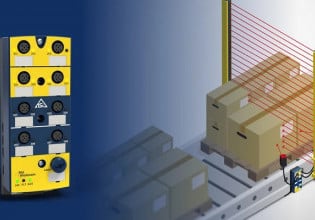It’s a MIRAI-cle: Tough Tasks Made Easier With Micropsi and KUKA
Challenging robotic tasks will now be easier to manage for KUKA customers, as KUKA now offers the power of Micropsi’s MIRAI AI-powered vision systems to their robotics users.
Robots excel at performing the same process day after day, but minor variations can have lasting effects on the automation line. One of the biggest drawbacks of industrial robots is their inability to adapt to unforeseen circumstances, which can lead to significant disruptions in the automation system.
Even if these changes are something minimal, such as a part showing up two seconds late, it can disrupt the entire process. This is where MIRAI comes in. Customers of KUKA Robotics can now purchase their robots with one of the most powerful eyes on the market: the MIRAI AI-powered vision system. The AI-powered vision system developed by Micropsi Industries will allow KUKA robots to adapt to these unforeseen circumstances in real time.

KUKA Robot assembling sensitive electrical components thanks to MIRAI AI-powered vision system. Image used courtesy of Micropsi Industries
How Does MIRAI Work?
MIRAI is an AI-powered vision system that consists of both hardware and software. The kit includes a camera and mount that directly attaches to the robot, a controller for the vision system, and a tablet loaded with the MIRAI training application.
Once the hardware is mounted on the robot and the robotic application is developed, the robotic controllers will exchange control based on the complexity of the tasks. During the robotic process, the robotic controller will manage the usual “simple” tasks, but once the program gets to a more “complex” task that the robot cannot repeatably complete, the robotic controller will relinquish the task to the MIRAI controller. Once the complex task is complete, the MIRAI controller will release control back to the robotic controller.
As an example, imagine a robot picking up an object floating in water. The coordinates of the object will certainly not be stationary, and simply taking a picture of the system may not be sufficient. In the time between snapping the picture and picking the item, it may have moved. MIRAI continuously monitors the process with cameras, carefully guiding the robot to the correct position until it is nearly touching the object, then the actual pick-and-place control returns to the robot for the remainder of the task.
Programming an AI-Guided Vision System
Programming of MIRAI’s vision system seems extremely complex, but with the training app, Micropsi Industries has simplified the process. While using the MIRAI’s training application, the programmer moves the robot and the camera records what is happening. The programmer also must teach what to do when deviations occur from usual operation. From there, the images recorded are sent to the Micropsi secure computing cloud, and it is converted into raw data and the MIRAI controller can now instruct the robot what to do in a variety of different circumstances in real-time based on policies set in place by the robotic configuration.

MIRAI’s AI-powered vision system with the MIRAI training application. Image used courtesy of Micropsi Industries
The controller fine-tunes the robot's moves based on the movements the programmer uses during training. From here, the robotic programming is complete. As with life, unforeseen circumstances can occur, so multiple sessions may be necessary to manage the day-to-day tasks of manufacturing.
Needless to say, it will be interesting to see how far Micropsi’s MIRAI can go in a variety of industries. Micropsi boasts that MIRAI can be successful in automating tasks that are dominated by human interaction due to the complexity of close tolerance manufacturing tasks such as assembly, screw driving tasks, insertion of needles, and cable insertion.
For more information, I would highly recommend checking out this unique video posted by Micropsi Industries about the MIRAI vision system.






